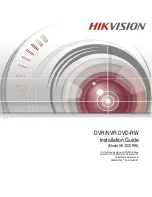
−
81
/
83
−
13. Usage Precautions
13-1. Paper Related Precautions
(1) High printing rates may cause blurred printing. Choose a suitable printing
rate to avoid blurring. Alternatively, set a suitable combination of print
speed and print density to avoid blurring.
(Refer to 9 Special Mode: 9-2. Changing the Setup.)
(2) Printing characters from a non-standard character set in a thin serif or
similar font will result in the characters appearing very faint. Use a bold
sans serif font.
(3)
To achieve quality printing without uneven pitch (expansion or
contraction), feed the paper 1mm (8 dots) or more when restarting printing
or after cutting the paper.
(4) In sequential printing, slow data transfer may cause white lines to run
across the print, as printing and pausing are repeated alternately. If print
quality has priority, use the Batch Print mode ("Batch (COM IF)", "Batch
(OTHER IF)").
(Refer to 9 Special Mode: 9-2. Changing the Setup.)
(5) The top margin can be set to either 12mm or 3mm by a command. If the
top margin is set to 3mm, be sure to remove the printed paper each time
the printing and cutting operation is completed as rollback of paper takes
place before printing. If printed and cut paper is not removed, the partial
cut section may be torn or the cut surface may be folded causing a paper
jam. Also, use at least 30 mm of paper for each transaction.
(6) Setting a high value for print density (110 % and over) can result in blurred
or uneven printing at low temperatures, depending on the printing pattern.
If print quality has priority, print at a lower speed.
(Refer to 9 Special Mode: 9-2. Changing the Setup.)
(7) Do not switch from narrower paper to wider paper (e.g. 58mm to 80mm)
when printing is in progress. When using narrow-width paper, a part of the
thermal head may directly come in contact with the platen roller without
any paper present. This causes the head to wear down, resulting in poor
printing quality. In addition, as the cutter blade also works at sections
without paper, the cutter blade may wear down, resulting in a bad cut. Do
not change paper width when printing is in progress.




































